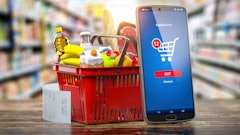
Influence Central fielded an in-depth survey with 740 consumers on consumer behavior changes around the Coronavirus disease (COVID-19) in September.
The emerging story from both surveys illuminates how the changes in consumer behavior that developed during the pandemic have now become ingrained into the New Normal that will outlast the pandemic’s ending.
For instance, as consumers took to their kitchens when the pandemic first shut down restaurants, fast food and take-out options, people have shifted to home-cooked meals as a way of life. Even with grocery stores and retail opening back up, e-commerce has become the preferred mode to shop, whether shipping items to one’s home or picking up curbside at a brick-and-mortar location.
An intense tune-in to both media and social media has been sustained and moved from primarily escapism to at-home entertainment and connectivity. As the pre-COVID-19 frenzy of everyday lives has subsided, people delved into sprucing things up at home, from DIY fix ups up around the house to gardening, re-decorating, vegetable growing and crafting.
Here are some lasting changes in consumer behavior and expectations for brands emerging.
Move away from brand names to generic
As of September, only 18% of consumers reported being willing to pay for a brand name label vs. a generic one. This represent just a sliver of an increase back toward brand name preference since March when only 12% of consumers said they’re very willing to pay for a preferred brand name label vs. a generic.
Nearly 58% of consumers share that they’ve switched over to more generic brands over the course of the pandemic. This compares to 29% willing to do so at the start of COVID-19. The primary reasons for doing so:
· Cost savings (67%)
· Unable to find favorite brands and products in-store (63%)
· Unable to find favorite brands and products online (39%)
What consumers want from brands
It is important for brands to recognize the anxiety held by consumers surrounding the economy. Case in point: 85% of survey respondents believe we are heading toward a recession, and 44% of consumers are increasingly worried about their short-term finances, compared to 58% greatly worried about their long-term finances. In light of economic anxieties, consumers first and foremost want deals and cost savings, coupled with a give back component and strong customer support.
Less in-store grocery tips due to anxious shoppers
Nearly 46% of shoppers have not returned to the same frequency of grocery shopping in store as prior to the March on-set of the COVID-19 pandemic. When it comes to anxieties when shopping in-store these days:
§ 55% of consumers have concerns over safety in terms of COVID-19 exposure.
§ 48% of consumers worry about not being able to find their favorite brands.
§ 31% worry about forgetting items during a shop and having to go back sooner than planned to purchase them.
§ Only 21% of consumers said that they do not experience any in-store shopping anxiety.
Delivery and pick-up continue to rise
Prior to the pandemic, 75% of consumers had never used delivery or pick-up services for groceries and essentials. Six months in, 41% of consumers now regularly rely on delivery or pick-up options for groceries. 52% of these consumers continue to be interested in new delivery and drop off services for groceries and essentials, and plan to increase their reliance on these options.
And, 56% of consumers favor local business options as a result of the pandemic and share that 81% of these businesses now offer delivery and pick up options which makes things easier.
E-commerce and the lasting shift in shopping preferences
Nearly 59% of consumers anticipate doing even more online shopping than they’re doing now going into the later months of this year.
When it comes to what kinds of products they plan to shop for more online, leading categories are:
Apparel 71%
Household essentials and cleaning products 70%
Health and beauty 62%
Toys and kids activities 52%
Home electronics 44%
Consumers also plan to increase their reliance on for the following shopping options this year:
Online shopping to ship directly to home 55%
Online shopping for pick up at a retail location 28%
Shopping in store only for essentials 31%
Grocery delivery 17%
When placing online orders, 46% of consumers report trouble receiving shipments in a timely manner, with 49% of the delays being 1-2 weeks long, while another 20% take even longer.
And, 39% of consumers also share they receive more product substitutions or missing products when ordering groceries online over the past 6 months.
Food take-out and delivery
When it comes to food take-out and delivery between the start of the pandemic and today, consumers are split:
§ 30% increased
§ 29% have decreased
§ 41% have stayed the same to pre-COVID-19 frequency.
Perception of the economy
When it comes to how consumers feel about the economy 6 months into the pandemic:
§ 54% believe we’re entering a significant recession and are concerned.
§ 21% believe that the economy is going to bounce back and they’re unconcerned.
§ 38% of consumers really worry about their personal finances; only 9% say they’re not worried at all.
§ Consumers increased these behaviors over the past 6 months:
Shopping online 59%
Turning into social media 50%
Watching TV 48%
Watching movies 45%
Creating their own social content 20%
Discovering new influencers to follow 21%
Seeking out influencer social media content 19%
Playing video games 13%
Trying new channels/movies/TV shows 8%

















